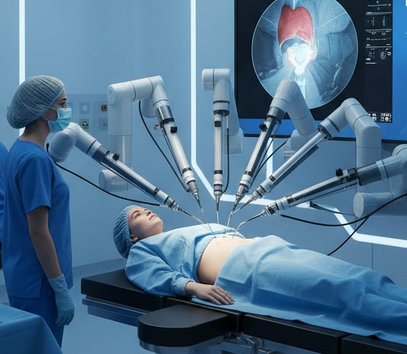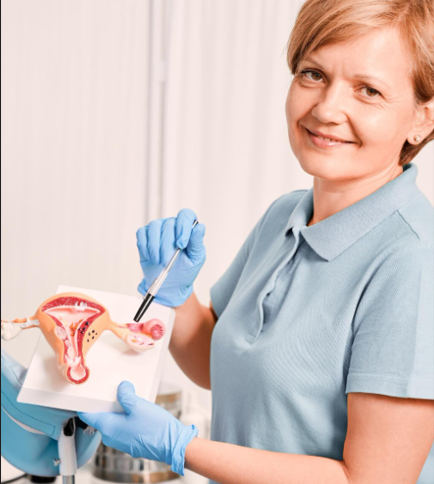Treatment Overview
Pelvic pain symptom analysis in Korea is a critical component of women’s health care aimed at identifying the underlying causes of pelvic discomfort, cramps, or chronic pain in the lower abdomen. This specialized evaluation is typically performed by experienced gynecologists and pelvic pain specialists who use advanced diagnostic tools to distinguish between gynecologic, gastrointestinal, urinary, and musculoskeletal sources of pain.
In Korea, hospitals and women’s health clinics are equipped with state-of-the-art imaging systems, hormone testing capabilities, and minimally invasive diagnostic options such as laparoscopy. This allows doctors to perform a thorough symptom analysis, ensuring that patients receive an accurate diagnosis and the most effective treatment plan tailored to their individual needs.
Pelvic pain symptom analysis is especially valuable for women who experience persistent or recurring pain that interferes with daily activities, menstrual cycles, or reproductive health.
Purpose & Benefits
The primary purpose of pelvic pain symptom analysis is to:
- Identify the exact source of pelvic pain.
- Differentiate between chronic and acute pain conditions.
- Provide a clear diagnostic pathway for targeted treatment.
- Prevent misdiagnosis and unnecessary procedures.
- Improve long-term women’s reproductive and pelvic health outcomes.
Key benefits of undergoing pelvic pain symptom analysis in Korea include:
- Access to advanced diagnostic imaging such as 3D ultrasound, MRI, and CT scans.
- Comprehensive laboratory evaluations for hormonal, inflammatory, and infectious markers.
- Accurate detection of complex gynecologic conditions like endometriosis, fibroids, ovarian cysts, or pelvic inflammatory disease (PID).
- Holistic and multidisciplinary management strategies that include gynecology, urology, gastroenterology, and physical therapy when needed.
Korea’s integrated and evidence-based approach ensures that patients receive both high-quality diagnosis and compassionate care.
Ideal Candidates
Pelvic pain symptom analysis in Korea is ideal for women who:
- Experience chronic or unexplained pelvic pain lasting for more than six months.
- Have pain during menstruation, intercourse, urination, or bowel movements.
- Have previously undergone pelvic surgery or have scar tissue concerns.
- Are experiencing irregular menstrual cycles associated with pain.
- Have been unable to identify the cause of their pelvic pain after previous consultations.
Korean gynecology clinics also provide specialized services for international patients, offering English-language consultations, medical interpreters, and customizable evaluation packages.
Possible Risks & Complications
Pelvic pain symptom analysis itself is a non-invasive and safe process. The risks are minimal but may include:
- Mild discomfort during physical or pelvic examinations.
- Emotional stress related to discussing sensitive health issues.
- Temporary anxiety while awaiting test results.
Korean specialists take extra measures to ensure privacy, emotional support, and patient comfort throughout the process.
Techniques Used
Pelvic pain symptom analysis in Korea involves a systematic and multi-dimensional diagnostic process, including:
- Detailed Medical History Review
The physician collects information about the onset, duration, and nature of pelvic pain, menstrual patterns, and associated symptoms such as bloating, fatigue, or nausea. - Comprehensive Physical Examination
A gentle pelvic examination helps detect tenderness, swelling, or possible structural abnormalities. - Imaging Techniques
- Transvaginal and transabdominal ultrasound for uterine and ovarian assessment.
- MRI or CT scans for detailed imaging when endometriosis, fibroids, or deep tissue involvement is suspected.
- Laboratory and Hormonal Testing
Blood tests assess hormone levels (estrogen, progesterone, FSH, LH) and rule out infections or inflammatory conditions. - Laparoscopic Evaluation (if needed)
In chronic or unexplained cases, diagnostic laparoscopy is performed to directly visualize internal organs and identify hidden abnormalities.
This combination of clinical, laboratory, and imaging data enables Korean doctors to develop precise diagnoses and individualized treatment strategies.
Recovery & Aftercare
Since pelvic pain symptom analysis is primarily diagnostic, no recovery period is needed unless additional tests (such as laparoscopy) are performed.
Aftercare recommendations include:
- Reviewing results with the gynecologist to discuss next steps.
- Following lifestyle, dietary, or medication advice if indicated.
- Scheduling follow-up visits to monitor progress and treatment effectiveness.
Many Korean hospitals offer personalized follow-up programs through online platforms, making ongoing care convenient for both local and international patients.
Results & Longevity
The results of pelvic pain symptom analysis in Korea provide a clear understanding of the pain source and help establish a personalized treatment plan. Accurate diagnosis ensures that treatments—whether hormonal therapy, physical therapy, or surgical intervention—are effective and long-lasting.
Regular follow-up with specialists helps maintain pelvic health and prevent recurrence of chronic pain conditions.
Treatment Process in Korea
- Appointment & Initial Consultation – Discussion of symptoms, pain timeline, and medical history.
- Physical & Imaging Assessments – Ultrasound or MRI as needed.
- Laboratory Testing – Hormonal and infection screening.
- Comprehensive Analysis & Diagnosis – Integrated evaluation by multidisciplinary teams.
- Follow-up & Treatment Plan – Implementation of a personalized management approach.
Korea’s patient-focused healthcare system ensures efficiency, privacy, and accuracy throughout every step.
Cost Range
The cost of pelvic pain symptom analysis in Korea depends on the complexity and number of tests performed:
- Initial consultation: ₩100,000–₩250,000 KRW ($80–$200 USD)
- Ultrasound & blood tests: ₩400,000–₩800,000 KRW ($300–$600 USD)
- Comprehensive analysis with MRI or laparoscopy: ₩1,000,000–₩2,500,000 KRW ($800–$2,000 USD)
Many clinics offer pelvic pain evaluation packages that include consultation, testing, and imaging for international patients.
Popular Clinics in Korea
- Asan Medical Center (Seoul) – Comprehensive women’s pelvic pain diagnostic program.
- Samsung Medical Center (Gangnam) – Advanced imaging and multidisciplinary pain evaluation.
- Severance Hospital (Yonsei University) – Holistic pelvic pain assessment with integrative care.
- CHA Bundang Women’s Hospital – Specialized reproductive and pelvic pain diagnostics.
- Gangnam Women’s Health Clinic – Tailored services for international patients seeking pelvic evaluations.




